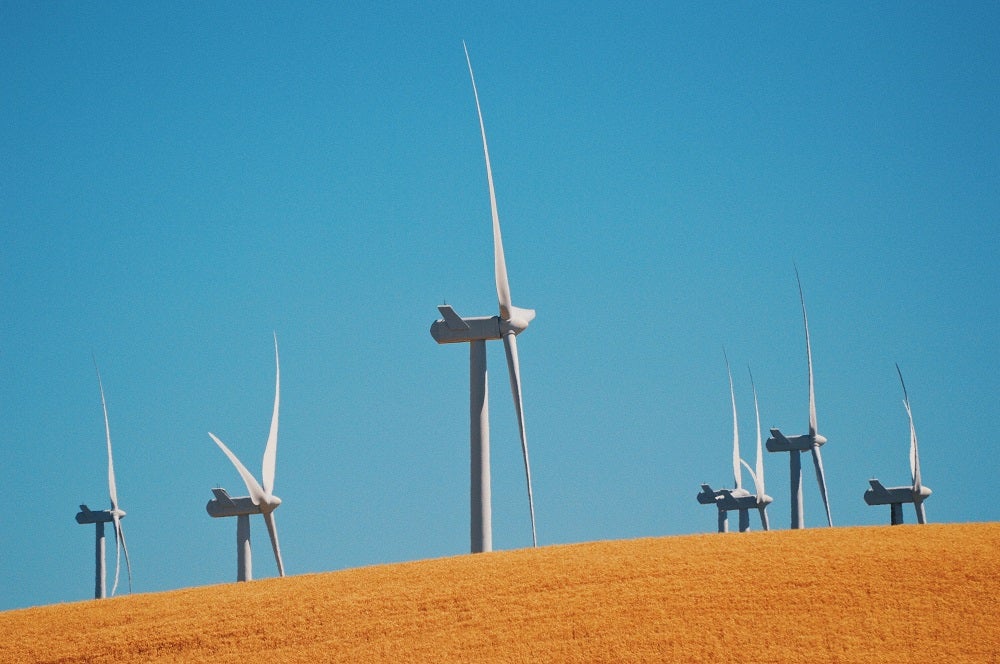
The clean energy transition should be placed at the heart of government economic stimulus measures responding to the coronavirus pandemic, according to a top energy watchdog.
It says this would take advantage of an opportunity to “accelerate the shift to sustainable, decarbonised economies”, as policymakers around the world pump trillions of dollars into recovery plans designed to help businesses and society mitigate effects of the coronavirus crisis.
A report published today (20 April) by the International Renewable Energy Agency (IRENA) suggests that while the investment needed to realise its “ambitious, yet realistic” net-zero pathway could be as much as $130tn by 2050, the benefits of such a financial intervention would be “massive”.
Making clean energy switch central to coronavirus response could add $98tn to global GDP by 2050
Along with tens of millions of new energy sector jobs, this level of capital investment could deliver a cumulative gain of $98tn to the global economy by 2050, according to the organisation.
IRENA director general Francesco La Camera said: “Governments are facing a difficult task of bringing the health emergency under control while introducing major stimulus and recovery measures.
“The crisis has exposed deeply-embedded vulnerabilities of the current system. Our outlook shows the ways to build more sustainable, equitable and resilient economies by aligning short-term recovery efforts with the medium- and long-term objectives of the Paris Agreement and the UN Sustainable Development Agenda.
“By accelerating renewables and making the energy transition an integral part of the wider recovery, governments can achieve multiple economic and social objectives in the pursuit of a resilient future that leaves nobody behind.”
#Renewables lead the path towards a resilient, just, prosperous & decarbonised world. Gov’ts should make #EnergyTransformation the cornerstone of a wider economic stimulus in response to #COVID19. @IRENA’s Global Renewables Outlook shows the way forward https://t.co/3UefL8rKpx pic.twitter.com/BmH7jOkwpK
— Francesco La Camera (@flacamera) April 20, 2020
IRENA estimates $130tn will be needed for ‘deep decarbonisation’ by 2050
Before the outbreak of coronavirus in Wuhan around the turn of the year, the energy transition had been riding high on international agendas, but the urgency of the health crisis has since taken precedence as governments scramble to limit the spread of the virus.
IRENA’s Global Renewables Outlook urges for long-term concerns around climate change to be integrated into the more immediate response to the pandemic.
Investing now in an energy transition pathway “based largely on renewable energy sources and steadily-improved energy efficiency” could reap dividends in the effort to limit global warming to well below two degrees Celsius — as well as targeting the “hardest to eliminate” emissions produced by energy-intensive industrial processes.
According to the forecast, achieving full carbon neutrality by 2050 would require cumulative investment across the energy industry of $130tn over the next three decades for scaling up new technologies and standardising business models.
But while the outlay may be high, IRENA says it is one that would “significantly pay off” with savings eight times more than the costs, as well as a 2.4% increase to global GDP and a four-fold increase in renewable energy jobs to 42 million.
In this sense, the energy agency suggests its transformation blueprint would “effectively pay for itself”.
Green hydrogen has a critical role to play
Green hydrogen — fuel created using renewable power sources — and end-user electrification will be critical components of the low-carbon transition, according to the energy watchdog, serving to replace fossil fuels in sectors like transport and household heating.
Recent analysis from BloombergNEF also highlighted renewable hydrogen as technology with huge potential to drive the energy transition — capable of removing up to 34% of global emissions from fossil fuels and heavy industry if given the financial support it needs to be deployed at scale.
Despite a levelling out in 2019, and an expected drop caused by low fuel demand resulting from coronavirus, energy-related emissions have grown by 1% on average each year for the past decade — a trend IRENA expects to continue unless concerted efforts are made to accelerate the clean transition.
Hydropower and bioenergy are also cited as key tools in transforming baseload power generation to support the intermittency of other renewables such as wind and solar.






